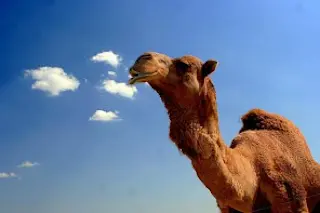Photo: flickr/mr_angelouxWe know that methane from cow farts is a greenhouse gas and a contributor to global warming. But how about farts from camelids (camels, llamas, and alpacas), which have a similar type of digestive system? In this study, the researchers set out to measure methane emission by camelids. To do so, they built "respiration chambers" for the animals (5 alpacas, 6 llamas, and 5 camels) -- basically, sealed rooms that allowed the scientists to control and measure the air coming in and out. Then they waited for the camels/llamas/alpacas to fart. Turns out that camelids produce less methane overall than cows, probably due to their lower food intake. Still, the next time you're feeling bad about your job, just be glad it doesn't involve setting up camel fart chambers.Methane Emission by Camelids "Methane emissions from ruminant livestock have been intensively studied in order to reduce contribution to the greenhouse ...
Do camel farts contribute to global warming?
Discover how methane emission by camelids like camels and llamas is notably less than that of cows due to their unique digestion.
More on Discover
Stay Curious
SubscribeTo The Magazine
Save up to 40% off the cover price when you subscribe to Discover magazine.
Subscribe













